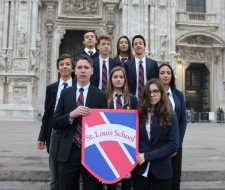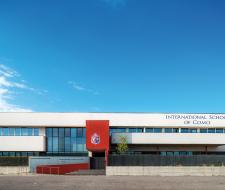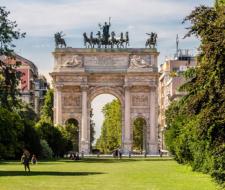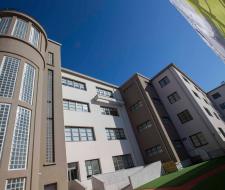Secondary education in Milan 2026
This content was developed and approved with active participation of Esther Diaz.
In the process of preparing the material, we referenced the following sources:
- https://en.wikipedia.org/wiki/Category:Education_in_Milan
- https://studyineurope.com.sg/university/politecnico-di-milano
-
 In 2022 an average IB score made up 37
In 2022 an average IB score made up 37 ItalyMilanCurrently watching: 4from 24300.00 € / year
ItalyMilanCurrently watching: 4from 24300.00 € / year -
 In 2022 an average IB score made up 34
In 2022 an average IB score made up 34 ItalyMilanCurrently watching: 3from 11205.00 € / year
ItalyMilanCurrently watching: 3from 11205.00 € / year -
 In 2022 an average IB score made up 37
In 2022 an average IB score made up 37 ItalyMilanCurrently watching: 1from 25000.00 € / year
ItalyMilanCurrently watching: 1from 25000.00 € / year -
 from 13430.00 € / year
from 13430.00 € / year -
 In 2022 an average IB score made up 35
In 2022 an average IB score made up 35 ItalyMilanCurrently watching: 2from 8220.00 € / year
ItalyMilanCurrently watching: 2from 8220.00 € / year -
 from 10900.00 € / year
from 10900.00 € / year -
 An innovative school with a modern campus in Milan
An innovative school with a modern campus in Milan ItalyMilanCurrently watching: 1from 13630.00 € / year
ItalyMilanCurrently watching: 1from 13630.00 € / year
The education system in Milan mirrors the structure of Italy's national education framework, which mandates school attendance for children from ages 6 to 16. The compulsory education consists of three levels: primary school, lower and upper secondary school. Like all major cities in Italy, to obtain school education in Milan is possible in public and private educational institutions. In 2021, there were over 900 schools of various types and levels in Milan, including more than 500 kindergartens and primary schools, 125 middle schools, and over 250 upper secondary schools.
Education System in Milan
Milan schools adhere to a curriculum designed and monitored by the Italian Ministry of Education. The combination of Italy's rich cultural heritage with modern teaching methods contribute to the popularity of Milan for expat families. Public schools prevail in Milan. If foreign students do not plan long-term stays, they will choose private institutions, despite their high costs and competitive admission processes.

What would you say is the most important when choosing a school?
This is the quality of support and work of the management, the opportunity to study at IB, the prestige of the school and the percentage of successful completion of the diploma stage of IB, recommendations for further universities. It is worth considering the national "recruitment" of campus students, opportunities for extracurricular development and activities, the availability of medical services and consultations, opportunities for language immersion. Is education at the chosen school based on the values you share? Is the school a close-knit community? Is academic support good?
Alternative destinations
Levels of Education in Milan
Schools in Milan are divided into four levels:
- Kindergarten (age of children from 3 to 5 years old)
- Primary School (age from 6 to 11)
- Lower Secondary School (for students aged 11- 14)
- Upper Secondary School (age from 14 to 19 years old).
Students, who have reached 14 years old, make a decision which concerns their academic path, selecting a specialization which affects their future university studies and career opportunities.
Types of Schools in Milan
Public Schools
Studying at public schools is free of charge for local students. The medium of teaching is Italian, which may not be convenient for most foreign families. Educational process stipulates obtaining a comprehensive understanding of Italian culture and education.
Schools often include Catholic religious education. However, diverse beliefs are respected. Students can attend non-religious alternative classes, involving various disciplines, ranging from human rights to mythology.
Private Schools
Private schools are not inferior in the quality of educational services in comparison to public schools. Private institutions also receive government funding, which results in adhering to approved curricula and academic standards. At the same time private institutions offer various educational philosophies or religious teachings, which include Catholicism or the Montessori method. Parents, who are interested in a personalized approach to their children's education often choose private schools, as they provide diverse pedagogical methods, allowing them to meet individual interests and preferences.
International Schools
Milan hosts several international schools, offering a variety of programs, such as the International Baccalaureate, American, British, French, and German curricula. Tuition fees are high. However, the educational process stipulates overcoming language barriers, providing excellent opportunities for further studying. The private schools have gained popularity due to their multicultural environments and comprehensive programs.
Support for Special Educational Needs
There are institutions in Milan, which provide support for children with special educational needs. Italy adopts a progressive approach to studying, ensuring inclusivity. Students with disabilities are provided with a wide range of services to guarantee a complete education. No matter the school type, each educational institution provides support for students with special needs.
Advantages of Studying in Milan
Children of non-Italian residents living in Italy permanently have a right to obtain free public education as Milanese residents. In most schools students are not required to wear uniforms. Milan's strategic location in Europe makes it easy for residents to travel to other EU countries, such as France, Germany, Greece, or the United Kingdom, for short trips during school holidays.
Milan is a city, where a diverse population of immigrants, professionals, tourists, and foreign students are living together. Due to cultural diversity, foreigners can expect a welcoming community in Milan.
School Year and Schedule
The academic year begins in mid-September and finishes in June. Winter holidays in late December give students the opportunity to celebrate Christmas and New Year with their families. Additional breaks occur in February and April. On average, the duration of summer holidays is 12 weeks.
Studying is conducted from Monday to Saturdays. Usually studies begin at eight in the morning, which last for five hours.However, modern arrangements provide students with the opportunity to have a shorter week, attending longer classes on weekdays, freeing up Saturdays.
At the end of each semester, students receive report cards called pagella. Grades range from 10 (excellent) to 1 (ungradable), with a passing grade being 6 for each subject.
Learning programs-summary information
| Name | Meaning | Equivalent | Min. age | Duration, years |
Next stage | Cost |
|---|---|---|---|---|---|---|
| GCSE | General certificate of secondary education | secondary education (non-accomplished) | 14 | 1–2 | A-Levels | 15,000 USD+ |
| A-Levels | Advanced level | secondary education (accomplished) | 16 | 2 | University | 15,000 USD+ |
| BTEC | Business and Technology Education Board | secondary special education | 14 | 2–3 | University/ work | 15,000 USD+ |
| Oxbridge Preparation | Preparing for Oxford and Cambridge | secondary education (accomplished) | 17 | 1 | University | 15,000 USD+ |
| International Baccalaureate | International baccalaureate | secondary education (accomplished) | 16 | 2 | University | 18,000 USD+ |
| Foundation/ Pathway Year | Preparatory year | admission to the 1st year of university | 17 | 1 | University | 14,000 USD+ |
| NCUK | The Northern consortium | 2 year university | 17,5 | 1 | 2 year University of NCUK | 13,000 USD+ |
| Special Preparation (Medics/Math/Business) | Specialized training | - | 14 | optional | optional | 4,000 USD+ |
| Academic English | Academic English | Language school | 8 + | 6–12 months | School or University | 8,000 USD+ |
Advantages and disadvantages of English schools
| Advantages | Disadvantages |
|---|---|
| The opportunity to enter the best universities in England, USA, Canada, Switzerland, Europe, the world | Expensive |
| High quality of education and academic standards | Strong workload |
| Perfect English after graduation | The need to change the social environment; it takes time to adapt |
| Useful contacts | The difficulty of choosing the most suitable school for the child, requires a qualified specialist |
Top 21 boarding colleges in England 2026
| 1 | Cardiff Sixth Form College |
| 2 | National Mathematics and Science College |
| 3 | Abbey College Cambridge |
| 4 | d'Overbroeck's College |
| 5 | MPW London |
| 6 | CATS Cambridge |
| 7 | Kensington Park |
| 8 | DLD London |
| 9 | King's College St Michael’s |
| 10 | Bellerbys Cambridge |
| 11 | Chelsea Independent College |
| 12 | MPW Cambridge |
| 13 | Bellerbys Brighton |
| 14 | CATS London |
| 15 | St Clare's Oxford |
| 16 | Bishopstrow College |
| 17 | CATS Canterbury |
| 18 | Bellerbys London |
| 19 | Ealing Independent College |
| 20 | Cambridge Tutors College |
| 21 | Abbey Manchester |
Literature and references
-
Education in Italy — Wiki
-
Category:Secondary schools in Italy — Wiki
-
Best schools in Milan — The Good Schools Guide
-
Secondary education in Italy — Wiki
-
Organisation of general upper secondary education – Eurydice — European Union
-
Primary and secondary education in Italy - statistics & facts — Statista
